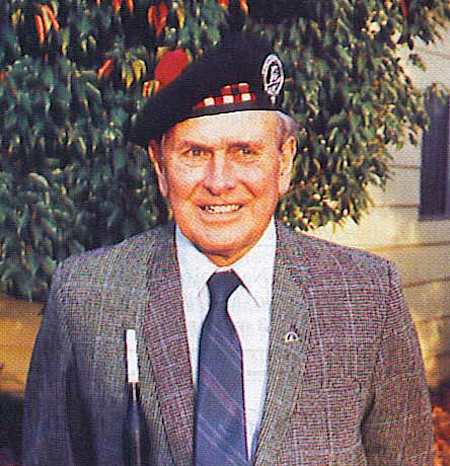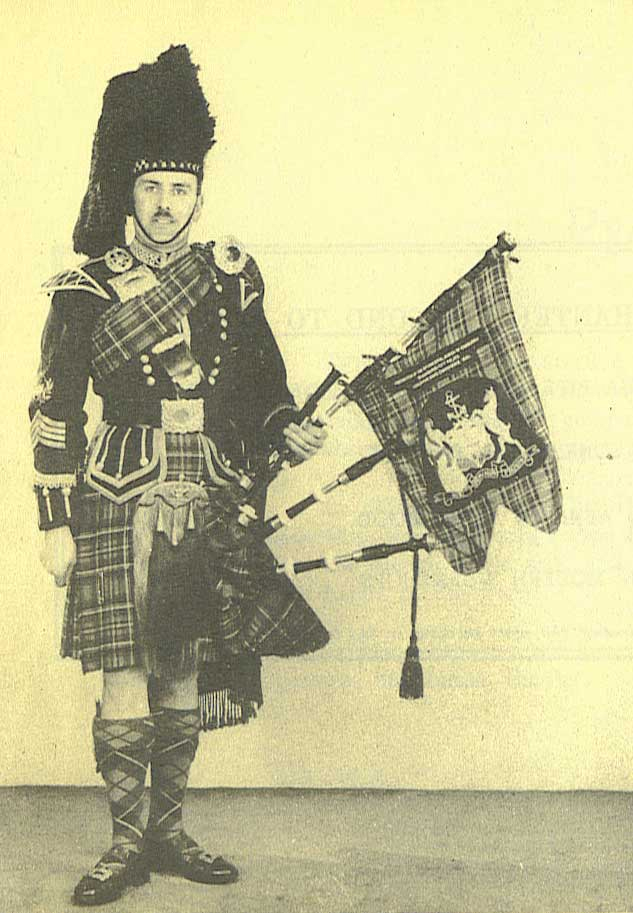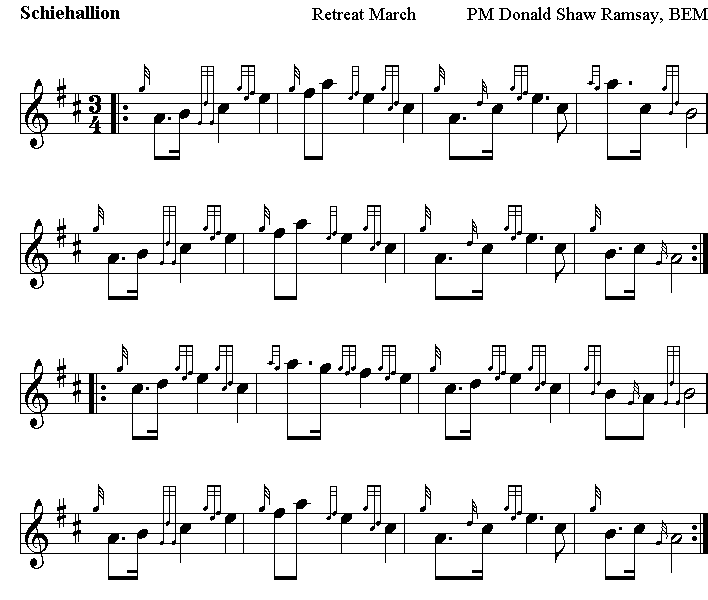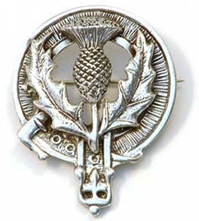Only a handful of pipers command iconic status in the world of piping without having won the major solo prizes; Donald Shaw Ramsay (1919-1998) (shown above) is one of those pipers.
He was born in Torpichen, Scotland, near Bathgate, and taught by Sandy Forrest, a pupil of John MacDougall-Gillies. He competed as an amateur and as a professional with promising success. But he did not pursue solo competition after the outbreak of the Second World War when he joined the Highland Light Infantry. He passed the pipe-majors’ course at the Castle under Willie Ross and subsequently became Pipe Major of the 10th H.L.I. out of Wick. At age 20, he was the youngest Pipe Major ever appointed in the British Army. He saw action on the continent and proved himself a dynamic leader even at a young age.
After the war became piper to the Duke of Hamilton, then in 1947 he joined the Edinburgh Police Force. In 1949 he took over from Duncan Cameron as Pipe Major of the Edinburgh Police Pipe Band, which at the time was a promising but not threatening competition band. The move was controversial, but Ramsay's ability to attract top players became legendary, and soon names like William Denholm, Jimmy Young, Harry McNulty, Jimmy Catherwood, George Pryde and Bob Montgomery graced the ranks. Ramsay made a focussed effort to teach every piper in the band to play in the same correct style, and the results were dramatic. Within a year of his taking over, the band captured the first of two World Championships it would win under his leadership, the second coming in 1954. He was also instrumental in introducing jigs and hornpipes into the pipe band scene through the Edinburgh Police repertoire.
In 1957 he was severely wounded in a shooting in the line of duty. He spent some months in hospital recuperating, and though he returned to policing, another injury necessitated his turning the band over to John D. Burgess and leaving the force. He and his wife Bessie moved to San Francisco in 1958, and while there he led the City of San Francisco Pipe Band to its first California Pipe Band Championship.
In 1964, Ramsay was convinced to return to Scotland to become Pipe Major of the fledging Invergordon Distillery Pipe Band. Again, his charismatic ability to draw talent led to the appointment of Alex Duthart as Leading Drummer, and the addition of such players as John Burgess, Jim Hutton and John MacDougall. The band won the European Championship a scant nine months after Ramsay took the helm and placed in every championship during the 1965 season. During the 1965, ’66 and ’67 seasons, Invergordon Distillery would capture every Championship except the World’s, which for five years was dominated by Muirhead and Son’s Ltd. Pipe Band.
The band became the stuff of legend, and to this day, pipers who played with Invergordon under Ramsay are regarded as close to pipe band royalty. The band’s recording, released at the height of its fame, included a groundbreaking full-band rendition of the piobaireachd “The Old Woman’s Lullaby” that many feel has not yet been outdone.
But it was not just in the pipe band world that Donald Shaw Ramsay made his mark. He is regarded as one of the leading modern composers, with such tunes as “Angus MacKinnon,” “Mrs. Lily Christie,” “Tam Bain’s Lum,” “The 10th Bn. Highland Light Infantry Crossing the Rhine, ” “Jimmy Young” and “Schiehallion” now ensconced as stalwarts in the piping repertoire.
He compiled two significant collections of light music published by Hugh MacPherson: The Edcath Collections, Books 1 and 2 in 1953 and 1958 respectively, the former also containing drum scores for many of the tunes. In 1953 he and James Robertson published The Master Method for Highland Bagpipe, a collection of tunes and a tutor component for both light music and piobaireachd.
After his brief but meteoric stint with Invergordon, the Ramsays returned to California, and the latter years saw them back and forth between Scotland and the San Francisco area, with Donald Shaw involved in judging on both sides of the Atlantic.
He died on July 14, 1998 and was buried at Grand Sable Cemetery in Polmont, Scotland. Fellow former Edinburgh Police pipe major Harry McNulty played “Schiehallion” on the walk to the graveside.




